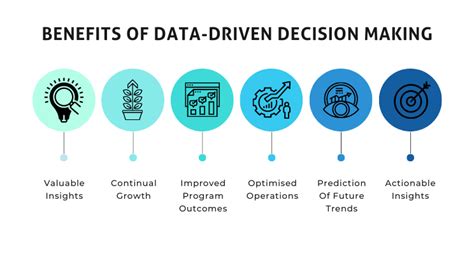In today’s data-driven world, the ability to think quantitatively is essential for success in a vast array of fields. Quantitative skills refer to the techniques and abilities used to collect, analyze, interpret, and draw conclusions from data. They play a pivotal role in shaping informed decisions that drive progress and innovation.

Definition and Key Characteristics
Quantitative skills encompass a range of analytical and problem-solving techniques that involve the use of numerical data and mathematical models. These skills empower individuals to:
- Measure and Collect Data: Gather relevant data from various sources to establish a foundation for analysis.
- Analyze and Interpret Data: Use statistical and mathematical methods to identify patterns, trends, and relationships within the data.
- Draw Conclusions: Formulate logical and data-supported conclusions based on the analysis.
- Communicate Findings: Effectively convey the results of the analysis to decision-makers and stakeholders.
Benefits of Quantitative Skills
Individuals with strong quantitative skills enjoy numerous advantages in their professional and personal lives:
- Improved Decision-Making: Quantitative analysis provides an objective and evidence-based foundation for making informed decisions.
- Enhanced Problem-Solving: By breaking problems into numerical components, individuals can develop creative solutions based on data.
- Increased Competitiveness: In today’s job market, quantitative skills are highly sought after and can differentiate candidates for various positions.
- Data-Driven Insights: Quantitative skills allow individuals to extract meaningful insights from data, empowering them to make evidence-based choices.
Applications across Industries
Quantitative skills have widespread applications in a multitude of industries, including:
– Business and Management: Analyzing market trends, forecasting demand, and optimizing operations.
– Finance: Evaluating financial performance, assessing risk, and making investment decisions.
– Healthcare: Conducting clinical trials, analyzing patient data, and developing treatment plans.
– Education: Measuring student performance, evaluating teaching methods, and predicting future success.
Developing Quantitative Skills
Improving quantitative skills requires a combination of education, practice, and continuous learning. Consider the following steps:
- Formal Education: Pursue coursework in mathematics, statistics, data analysis, and programming.
- Hands-On Experience: Engage in data analysis projects, internships, or volunteer opportunities to apply your skills practically.
- Online Learning: Utilize online courses and tutorials to supplement your knowledge base.
- Continuous Learning: Stay abreast of emerging quantitative methods and technologies through conferences, workshops, and professional development opportunities.
Case Study: Data-Driven Innovation
Company: Amazon
Industry: E-commerce
Quantitative Skills: Data mining, forecasting, and optimization
Results:
- Improved Product Recommendations: Amazon’s data mining algorithms identify customer preferences and provide personalized recommendations, leading to increased sales.
- Optimized Warehouse Operations: By analyzing data on product demand and delivery times, Amazon optimizes its warehouse operations, reducing costs and improving efficiency.
- Forecast Demand and Inventory: Quantitative models help Amazon forecast future demand and adjust inventory levels accordingly, preventing stockouts and maximizing revenue.
Tables for Further Understanding
Table 1: Benefits of Quantitative Skills
| Benefit | Description |
|---|---|
| Improved Decision-Making | Provides an objective basis for making informed decisions. |
| Enhanced Problem-Solving | Breaks problems into numerical components for creative solutions. |
| Increased Competitiveness | Differentiates candidates in the job market. |
| Data-Driven Insights | Extracts meaningful insights from data for evidence-based choices. |
Table 2: Applications of Quantitative Skills
| Industry | Applications |
|---|---|
| Business and Management | Market analysis, demand forecasting, operational optimization |
| Finance | Financial performance evaluation, risk assessment, investment decisions |
| Healthcare | Clinical trial analysis, patient data analysis, treatment planning |
| Education | Student performance measurement, teaching method evaluation, future success prediction |
Table 3: Case Study: Amazon’s Data-Driven Innovation
| Quantitative Skill | Result |
|---|---|
| Data Mining | Personalized product recommendations, increased sales |
| Forecasting | Optimized warehouse operations, reduced costs, improved efficiency |
| Optimization | Demand and inventory forecasting, prevented stockouts, maximized revenue |
Table 4: Step-by-Step Approach to Developing Quantitative Skills
| Step | Description |
|---|---|
| Formal Education | Pursue coursework in mathematics, statistics, data analysis, and programming. |
| Hands-On Experience | Engage in data analysis projects, internships, or volunteer opportunities. |
| Online Learning | Utilize online courses and tutorials to supplement your knowledge base. |
| Continuous Learning | Stay abreast of emerging quantitative methods and technologies through conferences, workshops, and professional development opportunities. |
Conclusion
Quantitative skills are essential for thriving in today’s data-rich world. These skills empower individuals to collect, analyze, interpret, and communicate data effectively, enabling them to make informed decisions and drive progress in various fields. By investing in the development of quantitative skills, you can unlock new opportunities, enhance your problem-solving abilities, and drive innovation in your personal and professional endeavors.
